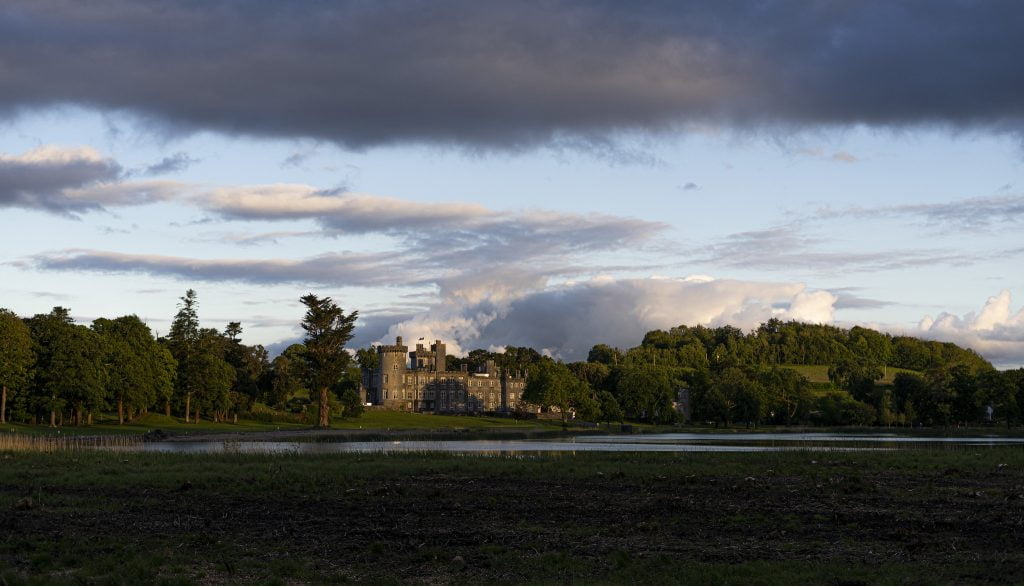With around 150 castles, Portugal is home to unforgettable architecture with an incredibly rich culture. These castles have played significant military roles for rulers and colonizers throughout history. You can find the unique characteristics of these colonizers in the fortification, be it the high walls and strong towers built by the Romans or the stone walls and heavy gates brought by the Moors.
You simply cannot miss out on these stunning monuments while traveling to the country’s epic landmarks. In this post, we will give you information that will assist you in planning your vacation. Check out the top ten castles in Portugal, along with their historical facts … plus some more hidden gems.
Table of Contents
10 Most Popular Castles to Visit in Portugal
The order of the list is based on Google search volume of each castle = popularity.
1. Pena Palace
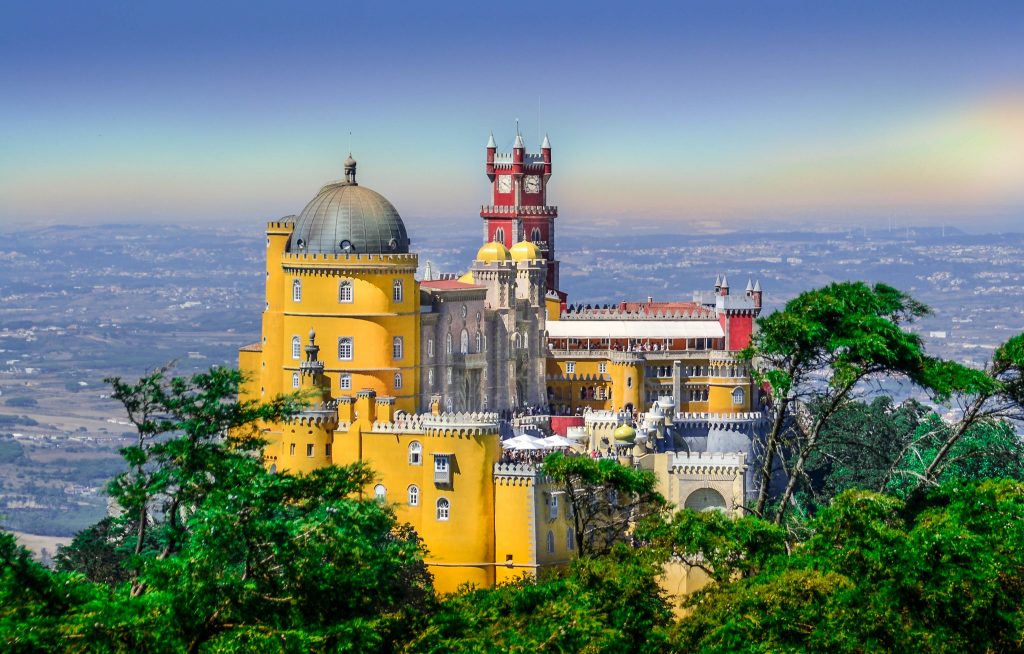
When you are looking to visit one of the most popular landmarks around Portugal, there is no better place than the National Palace of Pena. Located on the steepest hill above Sintra, this colorful architectural structure is formed with detailed embellishments drawn from Manueline and Moorish architecture. The palace’s well-planned structure and elevated height make it visible even from longer distances.
This UNESCO World Heritage Site has an elongated history that starts in the Middle Ages when it was built as a chapel devoted to the Lady of Pena. This chapel first turned into a monastery and eventually into a fortress. The castle as we know it was constructed in the middle of the 19th century. Today, this castle is a major tourist attraction and famous all around the world for its exquisite romantic structure.
- Location: Sintra, Portugal
- Time built: 19th Century
- Architectural style: Romanticist, Manueline, & Moorish
- Touring: Allowed. Visit the official website for more information.
2. Belém Tower
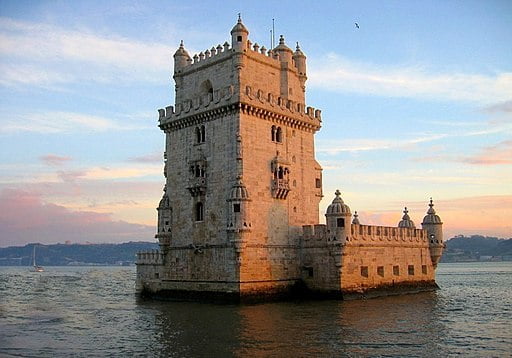
Belém Tower is a well-known UNESCO World Heritage monument just outside Lisbon. The tower stands 35 meters (114.8 ft) tall and is Manueline in style, with Moorish influences. The thick rope that encircles the castle culminates in graceful nodes that cross with a myriad of angles.
This tower was constructed by military architect Francisco de Arruda in 1514 to safeguard the Portuguese capital, which was exposed to invasions from pirates and various other neighboring states. It also served as a port for travelers to and from the area. During the Spanish invasion of Portugal in the late 16th century, this tower was used as a prison, housing upper-class criminals and political prisoners in the dungeons.
- Location: Lisbon, Portugal
- Time built: 16th Century
- Architectural style: Manueline & Moorish
- Touring: Allowed. Visit the official website for more information.
3. Castle of the Moors
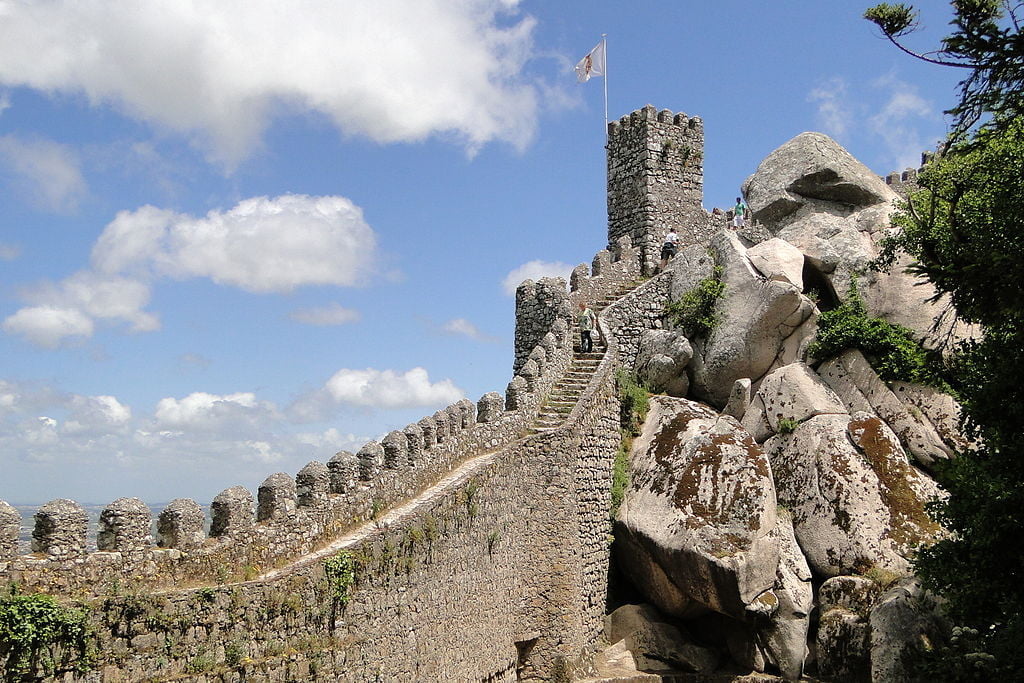
If you wish to go and learn more about the diverse history of Portugal, then the Castle of the Moors is just the right place to visit. This Moorish fort is enclosed by a high wall and lies on a steep hill in the middle of dense woodland. The castle is a Portuguese National Monument and is classified as a UNESCO World Heritage Site.
The Castle of Moors is one of the oldest and most well-preserved monuments of Portugal. Built as a military fortress, the site extends over uneven, rocky terrain on top of the Sintra Mountains. Despite its strategic location, this fortress was abandoned by its people back in the 15th century, losing all its significance as a defense fortification and falling into disrepair over time. The Romantic-style castle ruins are open to the public in the present day.
- Location: Sintra, Portugal
- Time built: 8th Century
- Architectural style: Moorish & Romantic
- Touring: Allowed. Visit the official website for more information.
4. Sao Jorge Castle
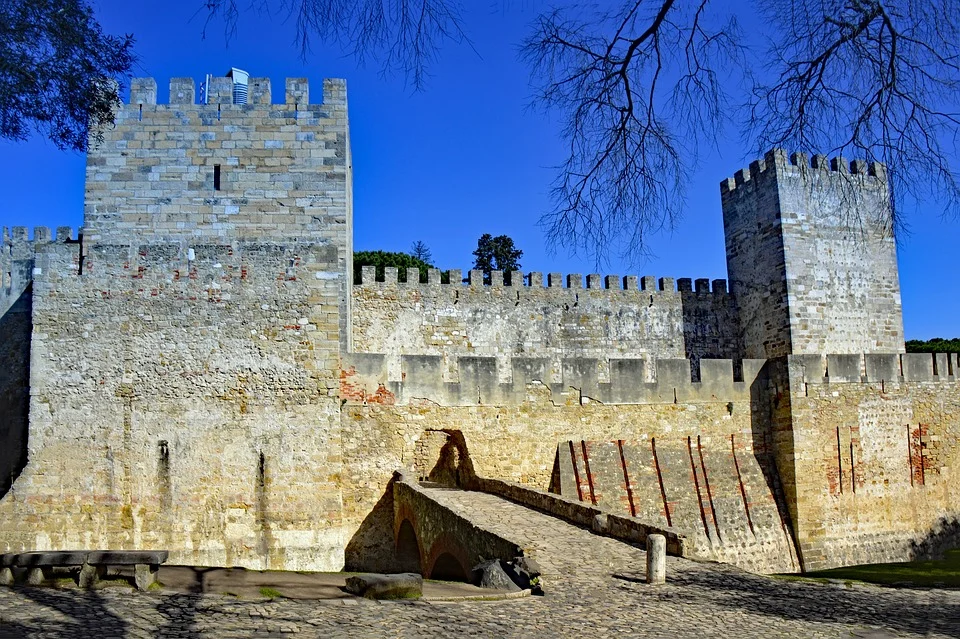
Sao Jorge Castle is a popular tourist destination situated in the heart of Lisbon, the capital city. The castle has been used for various purposes throughout its centuries of existence, including as a royal residence. This National Monument is located on a mountain overlooking the city’s buzzing Baixa district.
Though evidence implies a fortress existed here as early as the Iron Age, the castle’s foundations date from the late 12th century. The Moors fortified Lisbon sufficiently to repel Christian armies during their rule. King Afonso Henriques finally regained this fortress in 1147, after which a royal mansion was built within the guarded perimeter.
However, a significant part of the castle was damaged in an earthquake in 1755. This event led to the restructuring of the castle, which now stands in all its glory.
- Location: Lisbon, Portugal
- Time built: 1482
- Architectural style: Moorish
- Touring: Allowed. Visit the official website for more information.
5. Castle of Obidos
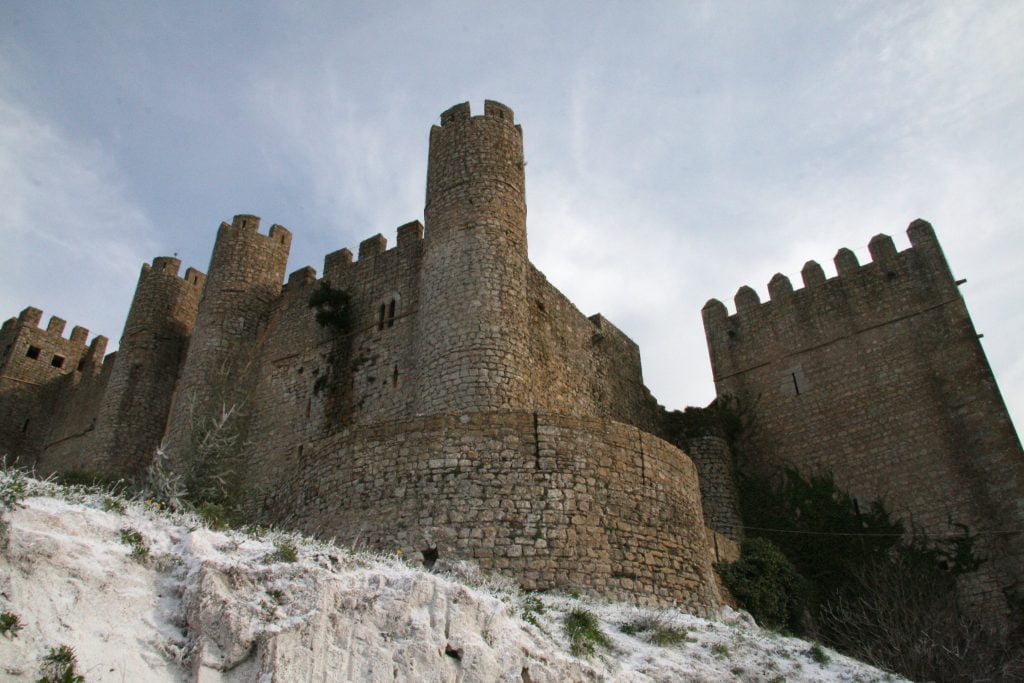
The Castle of Obidos was designed back when the Romans ruled Portugal. Situated in the Leiria District in the Obidos Municipality, the castle features a rich blend of Baroque, Romanesque, Gothic and Manueline architecture.
The castle is trapezoid-shaped with stunning cylindrical and square-shaped towers; the facade is primarily made of limestone and marble. Two courtyards are divided by a central wall with a rectangular arch, known as the Tower of Albarra.
This exceptionally preserved castle now serves as a dazzling hotel. The surrounding area is recognized for its stunning sceneries and lush foliage, as well as its charming cobblestone streets and lanes.
The castle site is open to the public with guided tours available. Tourists from around the world visit this historic hotel to learn more about the castle’s rich culture and to explore the many buried ancient mysteries.
- Location: Obidos, Portugal
- Time built: 14th Century
- Architectural style: Baroque, Romanesque, Gothic, & Manueline
- Touring: Allowed. Visit the official website for more information.
Revisit More Historic Places Below or Read Further
6. Castle of Almourol
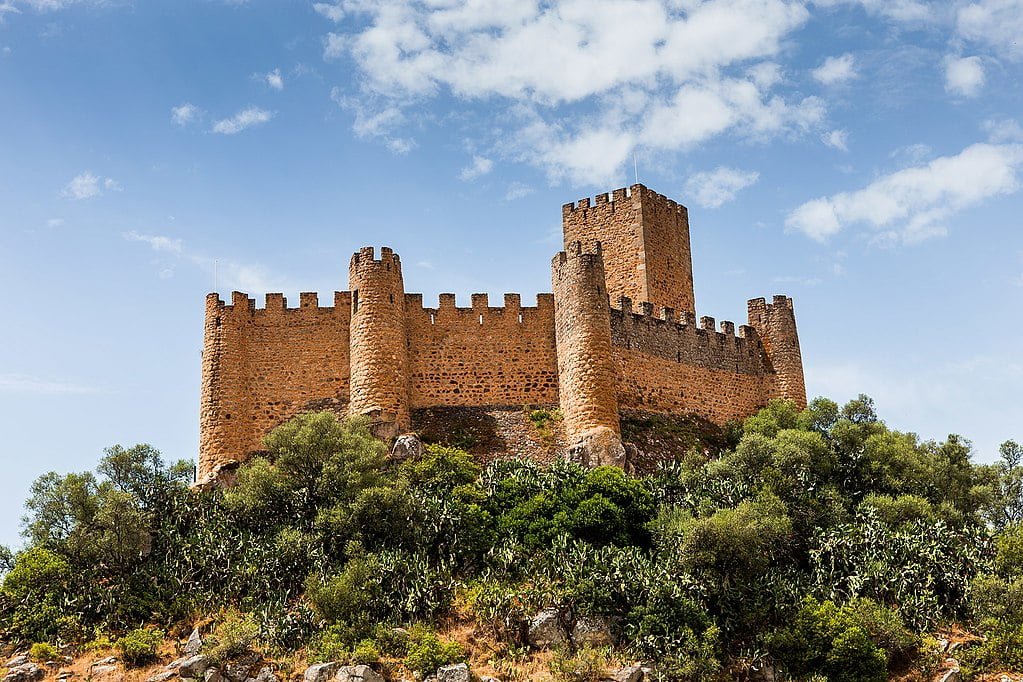
Almourol Castle is located in the central province of Portugal, situated on a small island in the middle of the river Tagus. This granite castle was constructed back in the 12th century. The regional commander of the Knights Templar in Portugal, Gualdim Pais, restructured the Castle of Almourol back in 1129, during the Reconquista.
The site is rectangular-shaped, with the inner section at a raised-up level, including a medieval three-story tower. The lower outer section’s walls are strengthened by nine tall, fortified defense towers. Despite being an ancient structure, it remains in great condition
Tourists from all around the globe visit this castle to get an in-depth experience of its remarkable history and enjoy the beautiful island by the river. The site is accessible to the public via a short boat trip and the entrance to the castle is free.
- Location: Praia do Ribatejo, Portugal
- Time built: 12th Century
- Architectural style: Templar-Medieval
- Touring: Allowed. Visit the official website for more information.
7. Guimaraes Castle
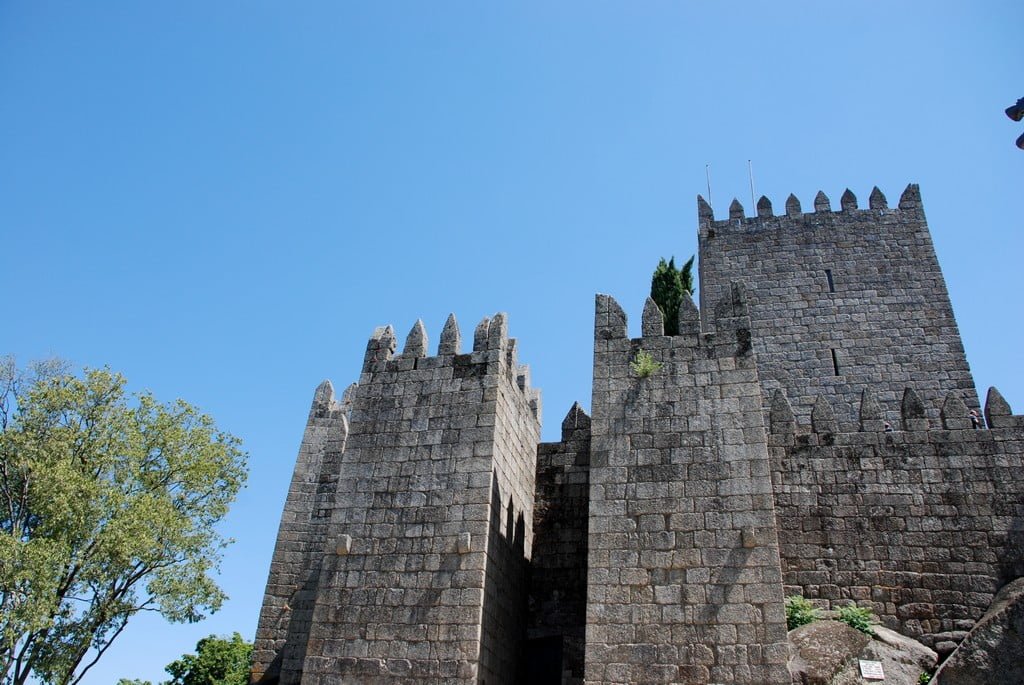
Guimaraes Castle was built in the 10th century. It had eight crenelated towers erected in the shape of a pentagram. Situated on a granite hilltop in Guimaraes Municipality, the castle was constructed to protect against attacks by the Norsemen and the Moors.
This monument served as the official royal home of Henry of Burgundy, Count of Portugal, the father of Afonso Henriques, the first king of Portugal. The castle of Guimaraes survived the major battle of So Mamede in 1128, which was later conquered by Afonso, and that marked the beginning of an independent Portugal. Since then, it has been referred to as the birthplace of Portugal.
Today, the site is open to the public. Visitors from the world over visit the historically rich site and tour around the grounds which boasts wonderful scenery and a look into ancient times at the castle.
- Location: Guimaraes, Portugal
- Time built: 10th century
- Architectural style: Romanesque & Gothic
- Touring: Allowed. Visit the official website for more information
8. Castle of Elvas
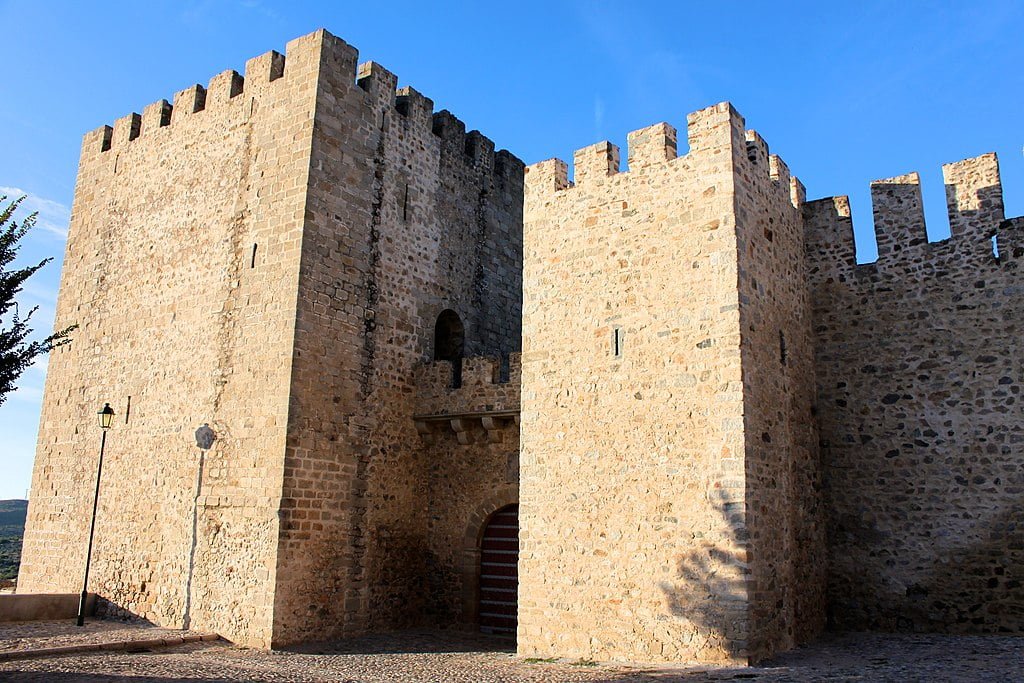
The Castle of Elvas is situated in Alcova Parish, in Portugal’s eastern region. Elevated on a hill at the city’s highest point, the castle site offers gorgeous views.
Constructed as a Roman garrison, it was ruled by the Muslim empire for several centuries. The Spanish seized the castle in 1658, at the same time that the population was confronted with the Black Death plague. The castle was captured by Napoleanic troops in 1807, however Britain and Portugal invaded after only a year, seizing the castle and ending French rule of the site. Built close to the Spanish border, the castle site repeatedly served as a defense structure throughout history; the ensuing damages resulted in a number of remodels.
Today, the Castle of Elvas is open to the public and offers a fascinating look into the way of life at the castle throughout the centuries of its existence.
- Location: Elvas, Portugal
- Time built: 10th Century
- Architectural style: Romanesque & Moorish
- Touring: Allowed. Visit the official website for more information.
9. Castle of Tomar
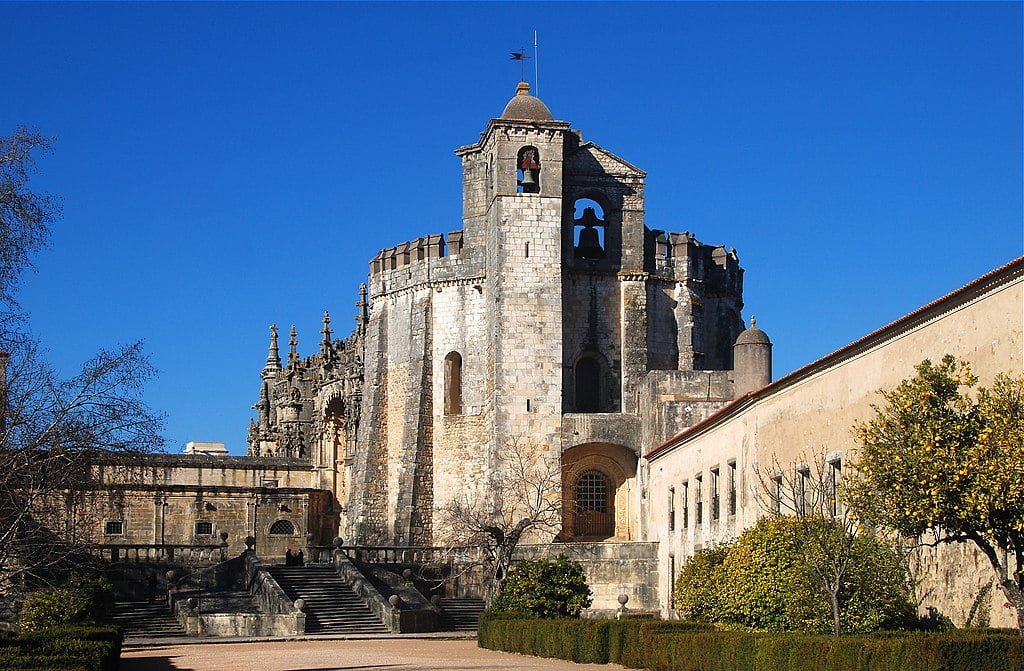
Tomar Castle (located in the city of Tomar) was built in the 12th century. Its distinctive structured round towers were considered revolutionary in Portugal at the time. Their primary intent was to defend Portuguese territory from Arab incursions.
The castle formerly belonged to the Knights Templar, until 1312 when Pope Clement V abolished the order. The castle passed to the Knights of the Order of Christ, before coming under royal ownership in the 15th century. King Manuel of Portugal made several notable changes to the castle’s design by adding exquisite Manueline ornamentation.
For its distinctive design, UNESCO designated the entire construction as a World Heritage Site a few years ago. Today, the site is a popular destination for history enthusiasts from around the world and a proud site of Portuguese history and culture.
- Location: Tomar, Portugal
- Time built: 12th century
- Architectural style: Templar-Medieval
- Touring: Allowed. Visit the official website for more information.
10. Castle of Santa Maria Da Feira
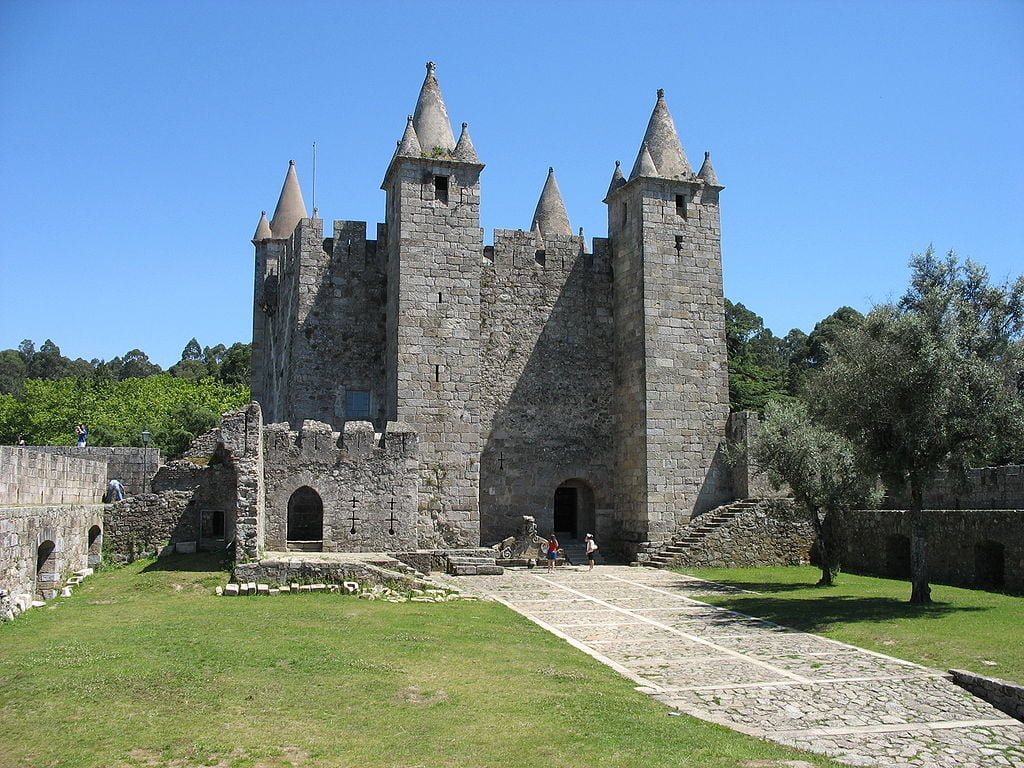
The castle of Santa Maria da Feira, is believed to have been used as a defense fortification between the 11th and 15th centuries. The castle is a fantastic example of Portuguese military-style design used during the Middle Ages. It was constructed using wood, limestone, masonry, and granite building materials.
Declared a national monument of Portugal since 1910, the site also has parapets and walls providing pleasant views of the town and surrounding countryside, and it has retained its picturesque aspect. Extensive restoration was completed at the site during the 20th century.
Today, the castle site is open to the public. Guided tours are available for visitors to learn about the fascinating history of the castle and the town as they explore the grounds. There are several visible inscriptions throughout the site, documenting events that occurred at the castle over the course of its existence.
- Location: Beira Alta, Portugal
- Time built: 15th century
- Architectural style: Medieval & Gothic
- Touring: Allowed. Visit the official website for more information.
Planning to Visit Nearby Countries? Check Out These Best Castles Lists:
10 Less Popular Castles Worth Visiting While In Portugal
Looking to explore more of the exquisite architecture of Portugal? Check out some more amazing castles that are a bit further off the beaten path, listed below.
11. Sabugal Castle
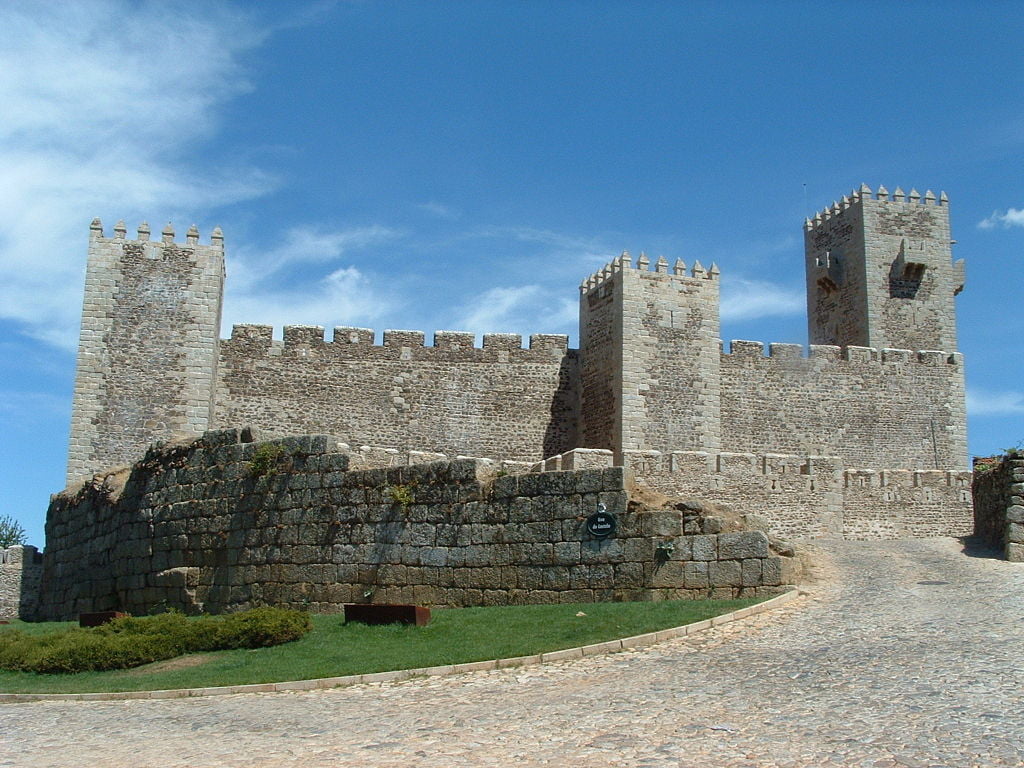
Sabugal Castle is a beautiful structure situated in Sabugal city, Portugal, built around the 13th to 14th centuries. The castle is a memorable representation of Portuguese Gothic architecture–a style dominant in Portugal during the late Middle Ages.
The castle served as a military command center and barracks for Portuguese and English soldiers during the Napoleonic Wars. An unusual element in the castle’s design, the inner wall with five grand towers is surrounded by an outer, pentagonal wall. The magnificent castle site is open to the public for touring.
- Location: Sabugal, Portugal
- Time built: 13th and 14th century
- Architectural style: Portuguese Gothic
- Touring: Allowed. Visit the official website for more information.
12. Castelo de Palmela
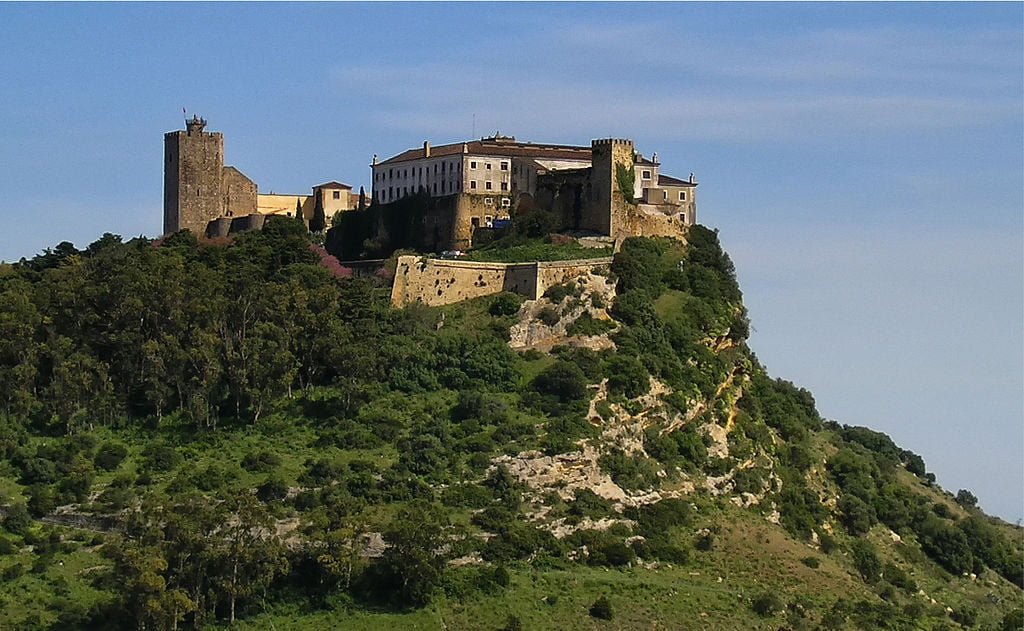
Castelo de Palmela (Palmela Castle) is a picturesque castle located on a hill with a breath-taking view of the Sado and Tagus estuaries and the Arrábida hills. The castle is situated in the Setubal region of Portugal.
The site dates to as early as 310 BCE, with a long history of owners since. The current castle site includes 2 churches, 16th-century graves, square and round castle towers with an entrance tower and cannon fortifications.
This historically rich castle and museum are open to the public.
- Location: Setubal region, Portugal
- Time built: 310 BCE
- Architectural style: Roman
- Touring: Allowed. Visit the official website for more information.
13. Castle of Braga
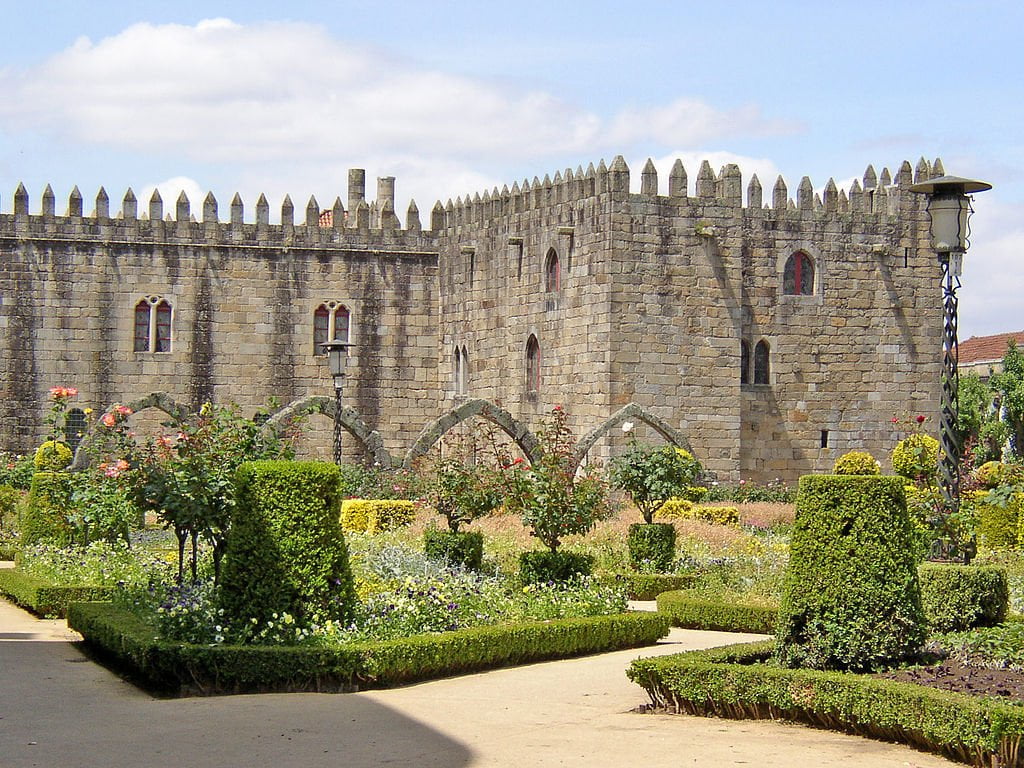
The Castle of Braga was an ancient fortification surrounding the town of Braga in Portugal. The still-standing ruins include only the towers and gates.
The castle was constructed as early as the 2nd century, with reconstruction work throughout the centuries. The history of the castle spans through the centuries and includes facets from the Roman Empire, the Middle Ages, and the Republic of Portugal. The style of the ruins is mostly medieval; however, the tower of Sao Sebastiao and Porta Nova is in the Rococo style.
The castle ruins are open to the public.
- Location: Braga, Portugal
- Time built: 2 ADE
- Architectural style: Medieval
- Touring: Allowed. Visit the official website for more information.
14. Castle of Montemor-o-Velho
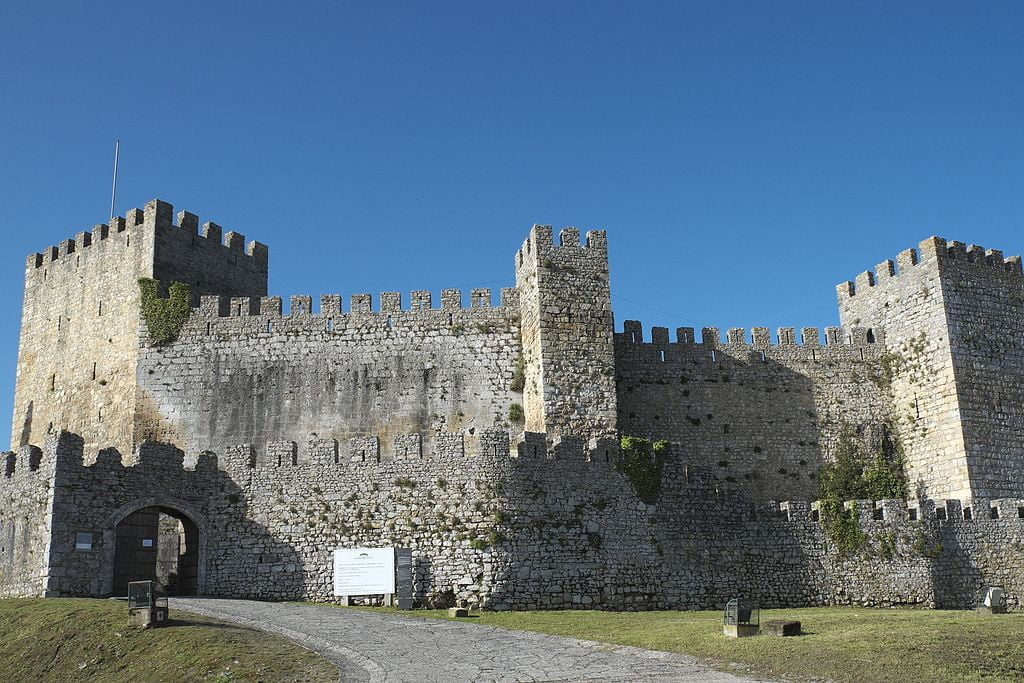
The Castle of Montemor-o-Velho is a dominating ruin perched on a hilltop, in the municipality of Montemor-o-Velho, in the Coimbra region, Portugal.
The castle was constructed in the 13th century with some later additions during the 16th century. Towers and some walls are all that remain intact at the site. Some remnants in the Gothic style have been discovered at the site.
The Castle of Montemor-o-Velho was declared a national monument in 1910. It is open to the public. In August, the castle site is the venue for the electronic music Festival Forte.
- Location: Montemor-o-Velho, Portugal
- Time built: 10th, 13th, 16th centuries
- Architectural style: Medieval, Gothic
- Touring: Allowed. Visit the official website for more information.
15. Montalegre Castle
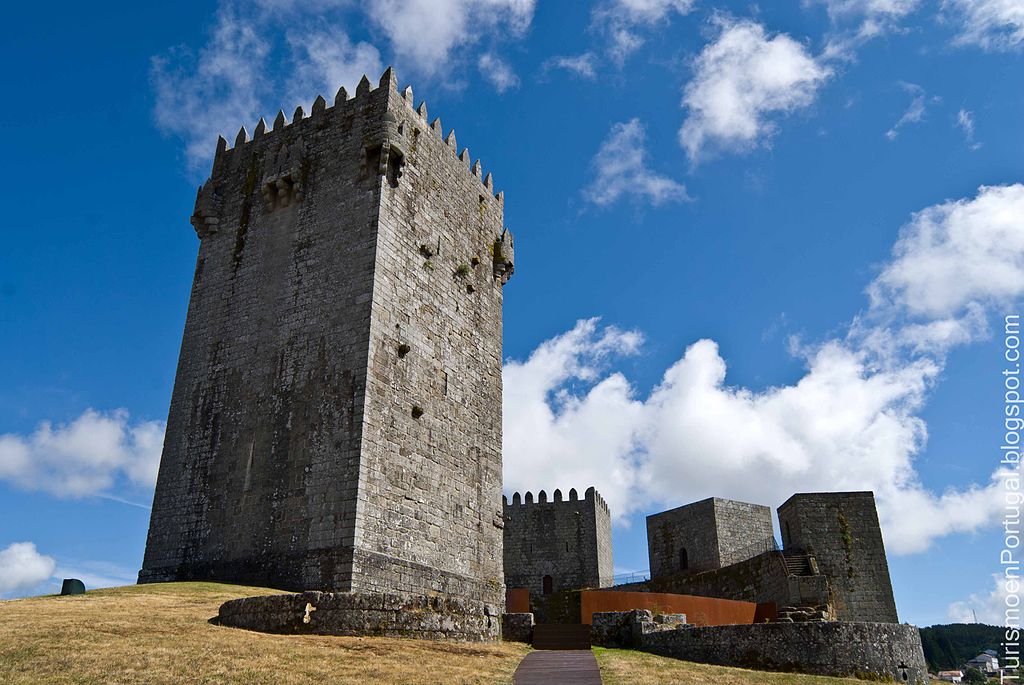
Montalegre Castle is a glorious castle situated atop a hill overlooking the village of Montalegre. It was built in the 14th century. Believed to have been further fortified during the 17th century, the castle even survived an earthquake in 1755.
Square shaped, with four grand towers at each corner, the castle site houses a museum showcasing the history of the castle and town. The magnificent castle ruins remain mostly intact, including a depository and parts of the old cistern. The historical site is open to the public to tour and explore.
- Location: Montalegre, Portugal
- Time built: 14th century
- Architectural style: Medieval
- Touring:Allowed. Visit the official website for more information.
Revisit More Historic Places Below or Read Further
16. Castle of Aljezur
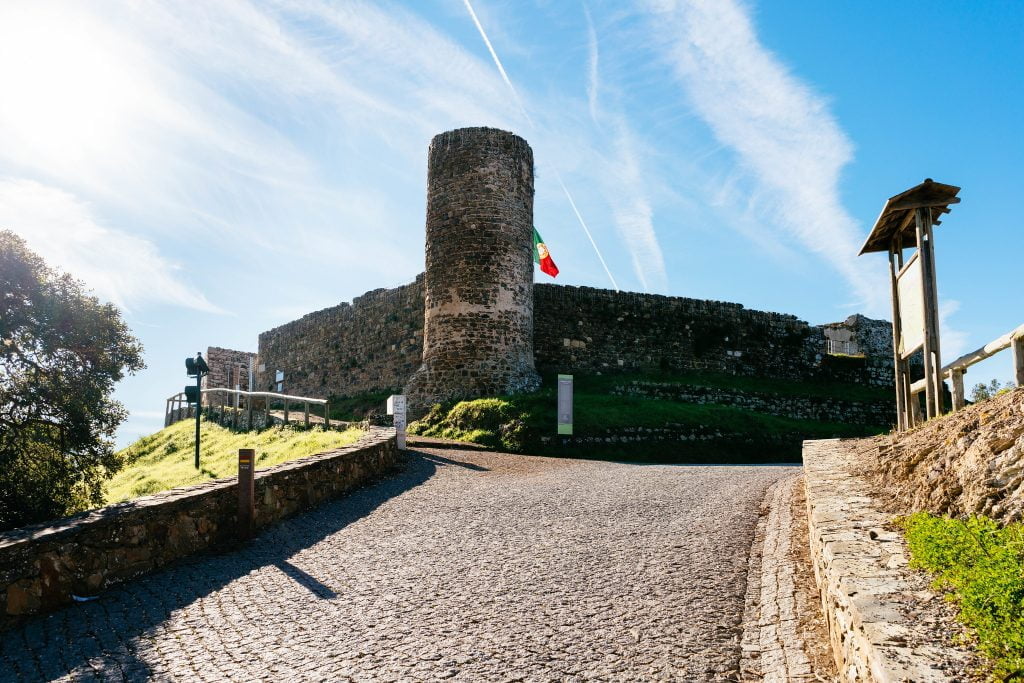
Situated on a high hilltop, the Castle of Aljezur was first constructed in the Neolithic period. The castle overlooks the river of Aljezur, in the municipality of Aljezur, Portugal.
Throughout the centuries, the castle was used as a lookout and defensive structure for the region until it was mostly destroyed during the Lisbon earthquake of 1755. The castle was partly rebuilt with a clear access road and lighting. The CMA of Aljezur undertook further renovations of the site in the 20th and 21st centuries. Today, the partially reconstructed castle & ruins attract tourists to the region.
- Location: Aljezur, Portugal
- Time built: Neolithic period
- Architectural style: Medieval
- Touring: Allowed. Visit the official website for more information.
17. Castle of Beja
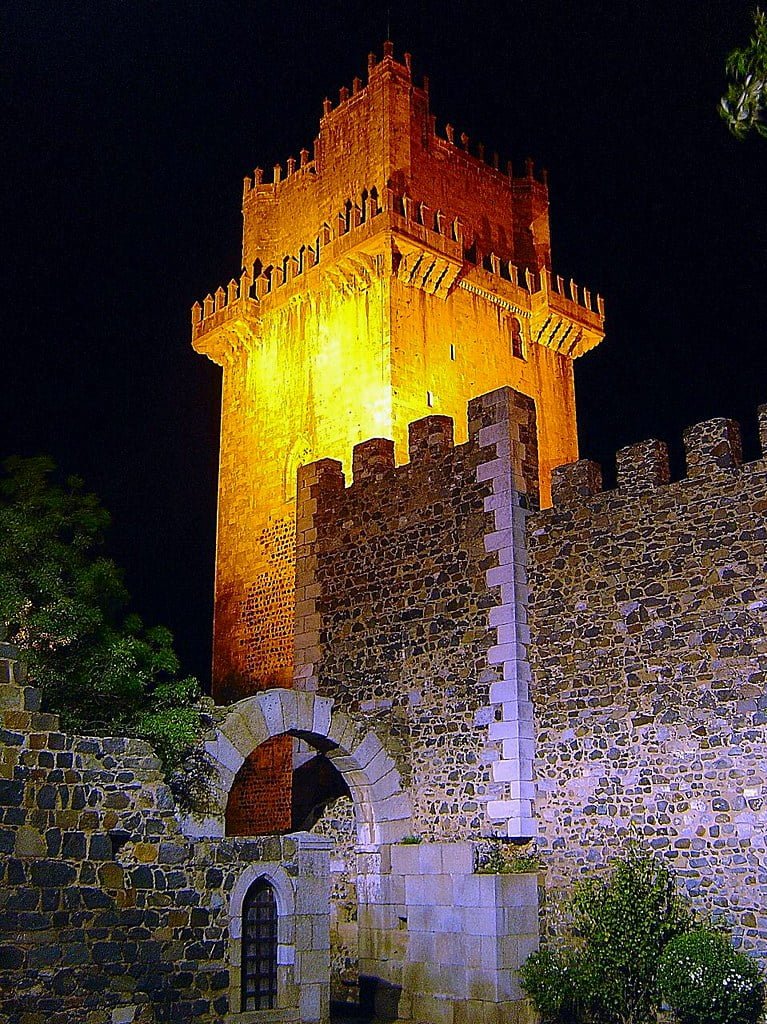
The ruins of Beja Castle are situated on a hilltop in the municipality of Beja in the Portuguese Beja province. The castle was built in the 14th century incorporating glass, iron, tile, marble, and limestone building materials. In the centuries that followed, many additions were made to the castle, along with certain demolitions. In 1910, the castle was declared a National Monument. Throughout the 20th century, reconstruction of the castle site was undertaken. Today, the castle site is enveloped by lush, landscaped gardens, and the site is open to the public for touring.
- Location: Beja, Portugal
- Time built: 14th century
- Architectural style: Medieval
- Touring: Allowed. Visit the official website for more information.
18. Castle of Belver
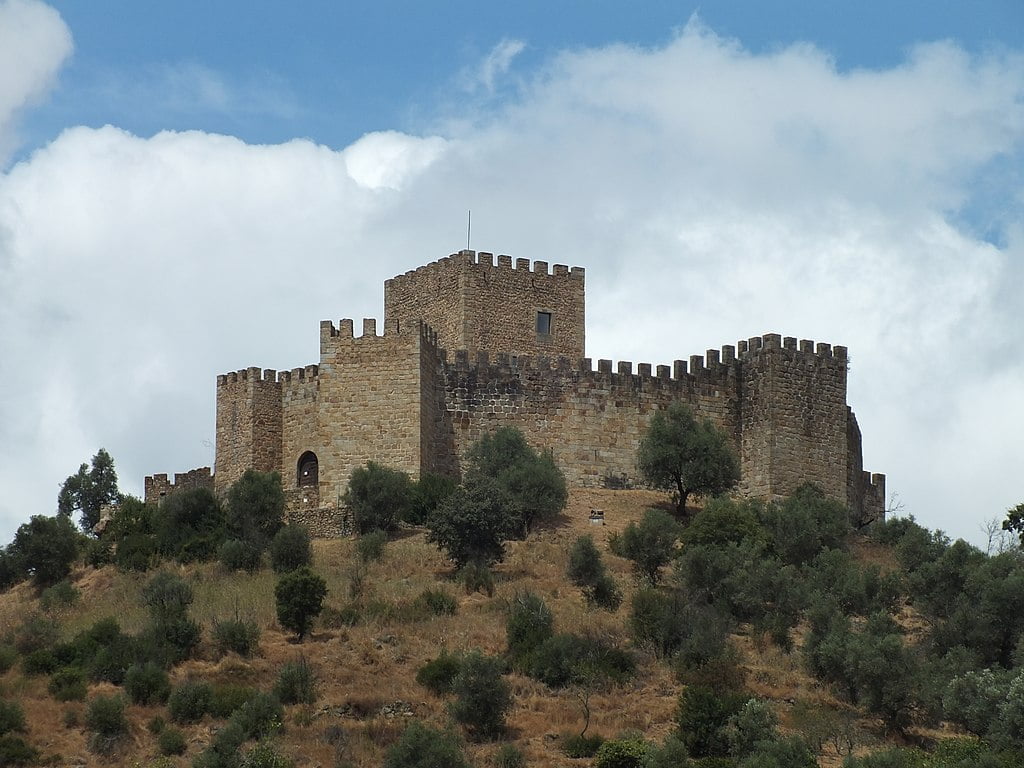
Belver Castle is a fully-reconstructed castle site atop a hill in the municipality of Gavião, in the province of Portalegre, at the center of Portugal.
The castle was constructed around 1194 to protect access along the Tagus River. It was updated over the centuries, but always retained the original Romanesque military motifs. By the 19th century the castle was abandoned by the living, housing only a cemetery. In 1909, the castle was in ruins after an earthquake.
During the mid-20th century, extensive reconstruction of the castle site was undertaken and it is open to the public today.
- Location: Portalegre, Portugal
- Time built: 12th century
- Architectural style: Middle Ages
- Touring: Allowed. Visit the official website for more information.
19. Castle of Evoramonte
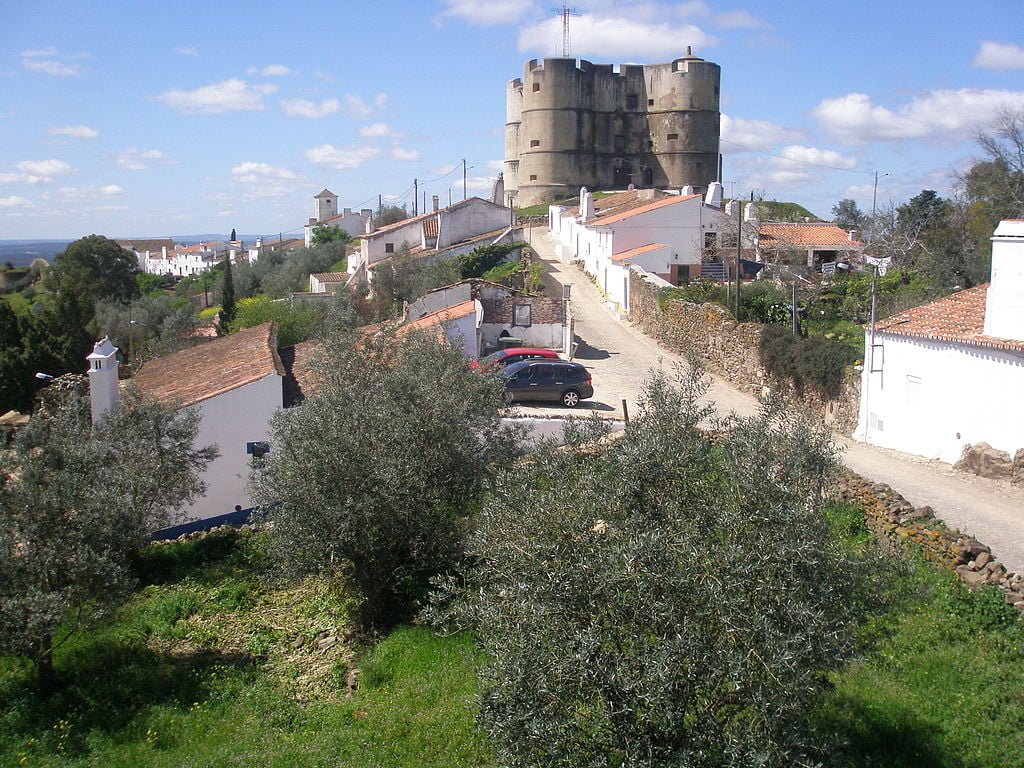
The Castle of Evoramonte is situated in the Alentejo region of Portugal. As of 1910, the castle site is regarded as a National Monument of Portugal.
The Gothic-style castle complex has existed since the 12th century, with Manuelin-esque features added over time during renovation projects. Featuring an irregular rectangular-shaped, three-level main building, the castle site includes four cylindrical towers built into the main structure.
The castle is open to the public. Fantastic walking tours are available offering tourists the opportunity to ascend the footpaths leading from the village to the picturesque castle site.
- Location: Evoramonte, Portugal
- Time built: 12th century
- Architectural style: Medieval, Gothic, Manuelinesque
- Touring: Allowed. Visit the official website for more information.
20. Castle of Silves
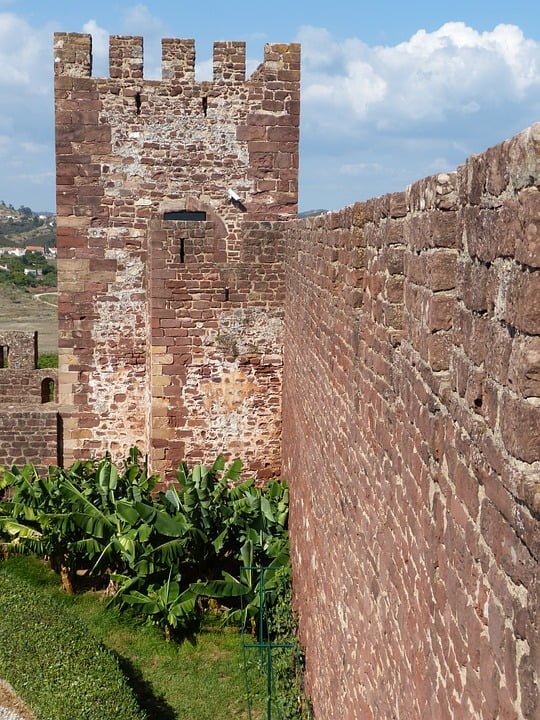
Located in the country’s Algarve region, Castle of Silves is a well-liked tourist destination, declared a National Monument in 1910.
]The Moors undertook grand development projects at the already-existing site during their rule from the 8th through 13th centuries. Today, the site is still considered one of the most well-maintained Moorish strongholds.
Castle of Silves is open to the public in the present day. Day trips are available providing visitors with wonderful views and interesting historical information about the castle and the town.
- Location: Silves, Portuguese Algarve
- Time built: c. 201 BCE to 13th century
- Architectural style: Roman, Moorish
- Touring: Allowed. Visit the official website for more information.
Planning to Explore Europe? Check Out These Best Castles Lists:
Conclusion
Portugal is an excellent tourist place, with some of the most remarkable places which attract tourists from all around the world. These are hidden treasures; however, while traveling across the country, it may be difficult to limit your options to just a few!


